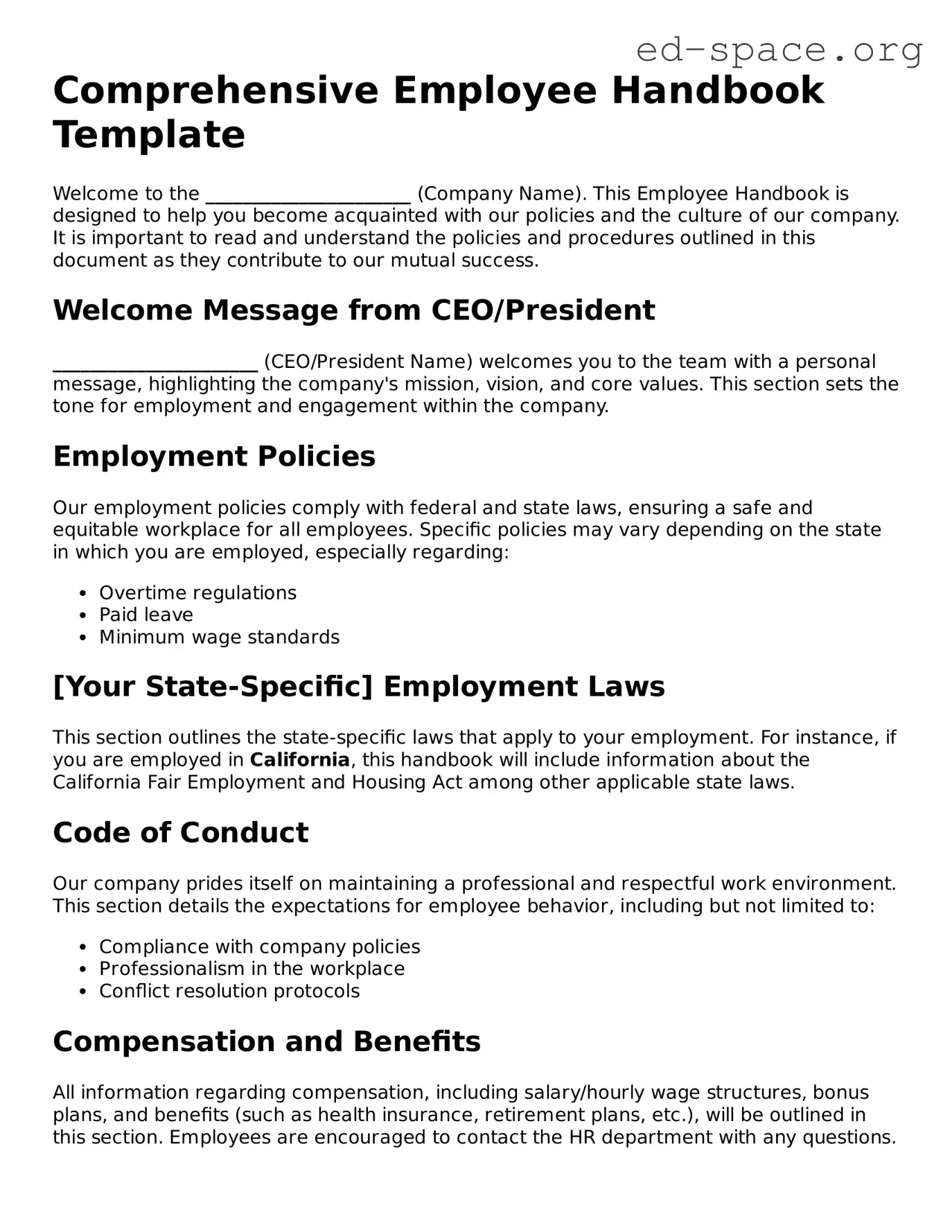Comprehensive Employee Handbook Template
Welcome to the ______________________ (Company Name). This Employee Handbook is designed to help you become acquainted with our policies and the culture of our company. It is important to read and understand the policies and procedures outlined in this document as they contribute to our mutual success.
Welcome Message from CEO/President
______________________ (CEO/President Name) welcomes you to the team with a personal message, highlighting the company's mission, vision, and core values. This section sets the tone for employment and engagement within the company.
Employment Policies
Our employment policies comply with federal and state laws, ensuring a safe and equitable workplace for all employees. Specific policies may vary depending on the state in which you are employed, especially regarding:
- Overtime regulations
- Paid leave
- Minimum wage standards
[Your State-Specific] Employment Laws
This section outlines the state-specific laws that apply to your employment. For instance, if you are employed in California, this handbook will include information about the California Fair Employment and Housing Act among other applicable state laws.
Code of Conduct
Our company prides itself on maintaining a professional and respectful work environment. This section details the expectations for employee behavior, including but not limited to:
- Compliance with company policies
- Professionalism in the workplace
- Conflict resolution protocols
Compensation and Benefits
All information regarding compensation, including salary/hourly wage structures, bonus plans, and benefits (such as health insurance, retirement plans, etc.), will be outlined in this section. Employees are encouraged to contact the HR department with any questions.
Leave Policies
Our company is committed to providing employees with necessary leave for personal, medical, or family reasons. This includes:
- Paid Time Off (PTO)
- Family and Medical Leave (as per the Family and Medical Leave Act)
- Sick Leave
- Bereavement Leave
Health and Safety
Maintaining a safe workplace is a top priority. The policies outlined in this section provide guidance on health and safety procedures, including emergency response plans and injury reporting protocols.
Disciplinary Action
Violations of company policies may result in disciplinary action, up to and including termination of employment. This section describes the procedures for addressing violations, ensuring fairness and transparency in the process.
Acknowledgment
This handbook is designed to provide a comprehensive overview of our company's policies and procedures. By signing below, you acknowledge receipt and understanding of this handbook:
Employee Name: ______________________
Signature: ______________________
Date: ______________________
